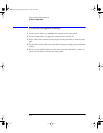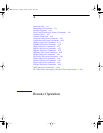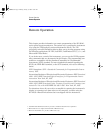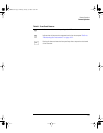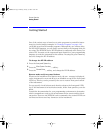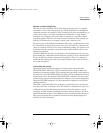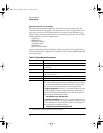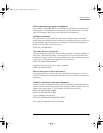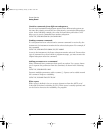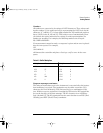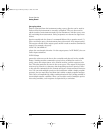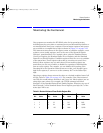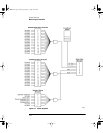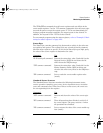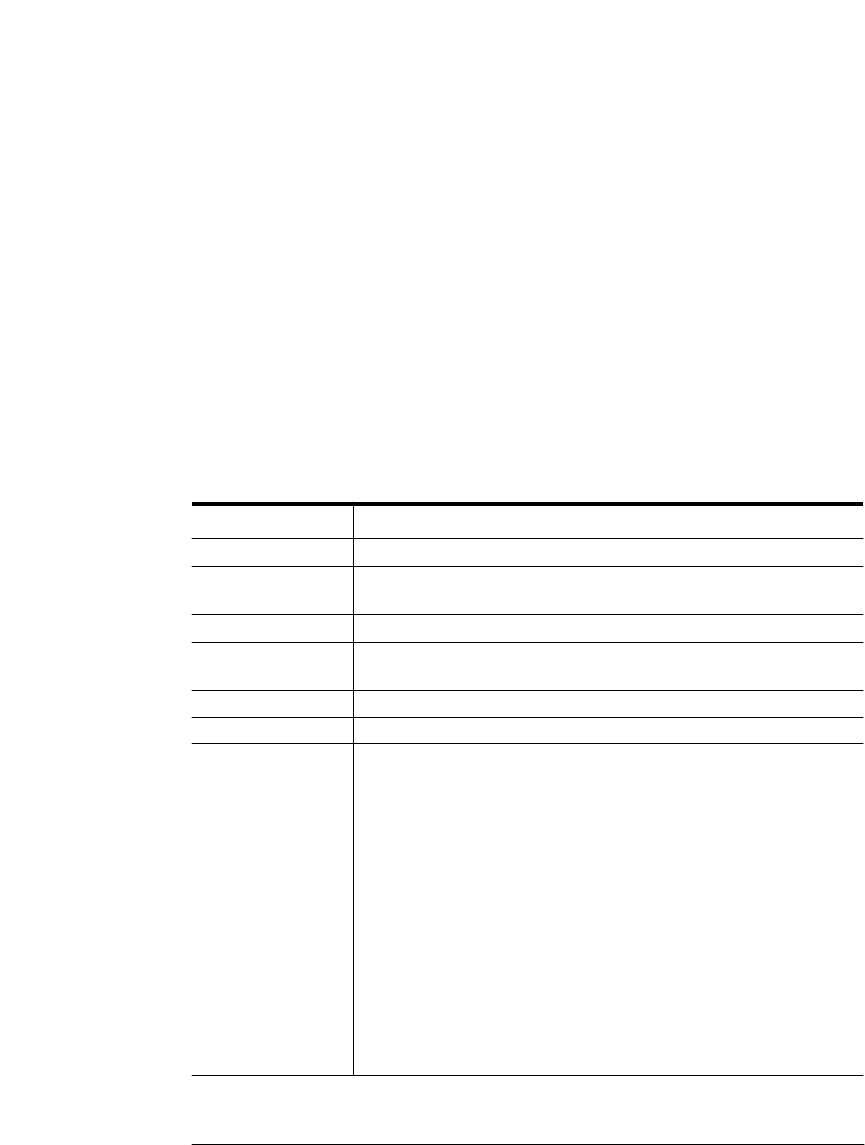
4-6
Remote Operation
Getting Started
Syntax notation conventions
The following information applies to the common and instrument-specific
commands listed in this chapter. All measurement values and parameters are
sent and received as ASCII strings with the exception of the following com-
mands. These commands send and receive floating point binary data in IEEE
488.2 indefinite or definite length blocks:
HCOPy:DATA?
MMEMory:DATA
TRACe:DATA:Y:POWER
TRACe:DATA:Y:RATio
TRACe:DATA:Y?
MEMory:STATe:EXTended?
Uppercase lettering indicates that the uppercase portion of the command is
the short form of the command. For example, in the command
WAVelength
,
WAV
is the short form.
Table 4-2. Syntax Notation Conventions
Convention Description
::=
Means is defined as.
|
Indicates a choice of one element from a list. For example, A | B indicates A or
B, but not both.
[ ]
Indicates the enclosed item is optional.
{ }
Indicates the enclosed item can be incorporated in the command several
times, once, or not at all.
<file_name>
File names must conform to standard MS-DOS®
a
file naming conventions.
a. MS-DOS is a U.S. registered trademark of Microsoft Corporation.
<trace_name> TRA, TRB, TRC, TRD, TRE, TRF
<data_block> This parameter represents the arbitrary block program data as defined by IEEE
488.2. Arbitrary block program data allows any 8-bit bytes to be transmitted.
This includes extended ASCII control codes and symbols. Two types of data
blocks are defined: definite-length blocks and indefinite-length blocks.
The definite-length block consists of a “#” character, followed by one digit
(in ASCII) specifying the number of length bytes to follow, followed by the
length (in ASCII), followed by length bytes of binary data. For example, two
bytes of binary data would be sent as follows:
#12<8 bit data byte><8 bit data byte>
The indefinite-length block consists of a “#” character, followed by a “0”
character (in ASCII), followed by any number of bytes of binary data. The data
stream is terminated by a new line character with EOI set. For example, two
bytes of binary data would be sent as follows:
#0<8 bit data byte><8 bit data byte>NL^EOI
book.book Page 6 Monday, January 31, 2000 10:34 AM





